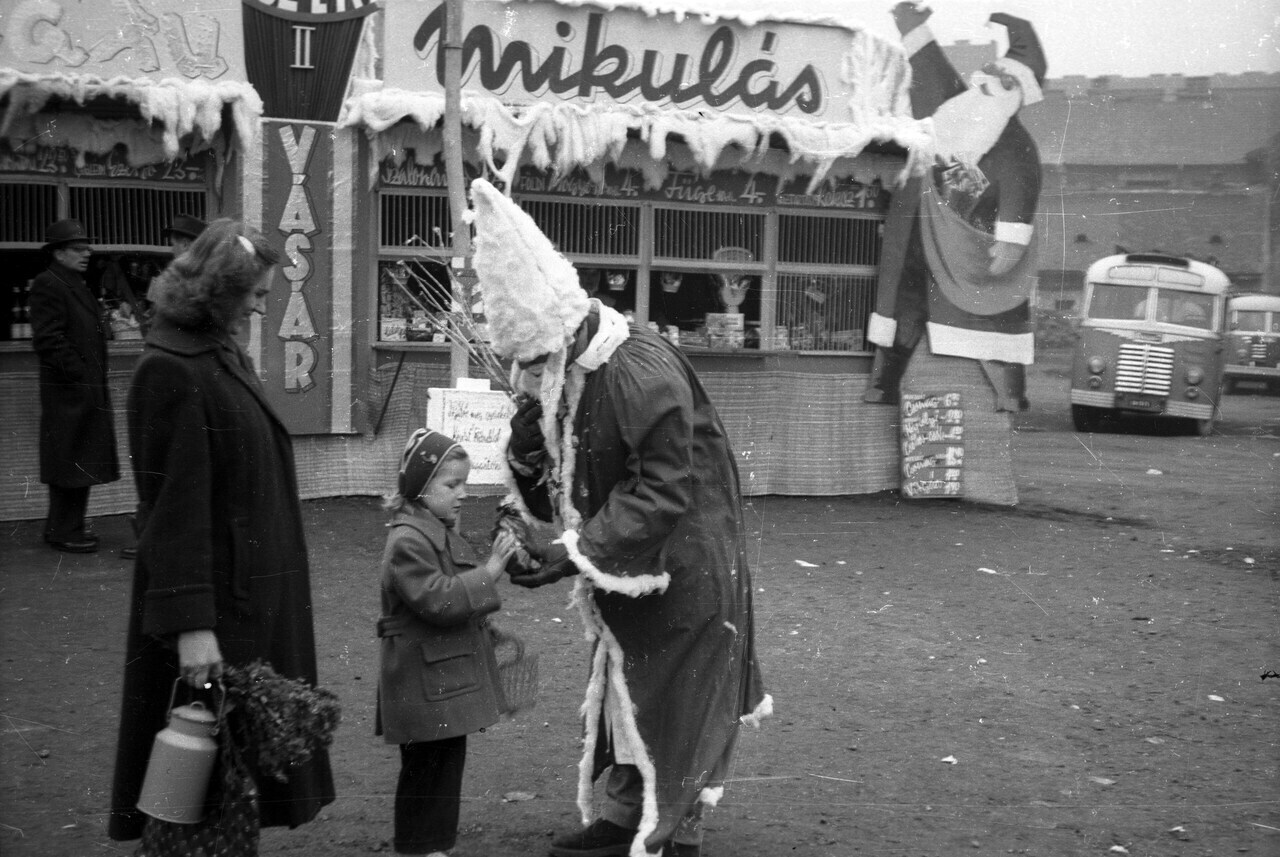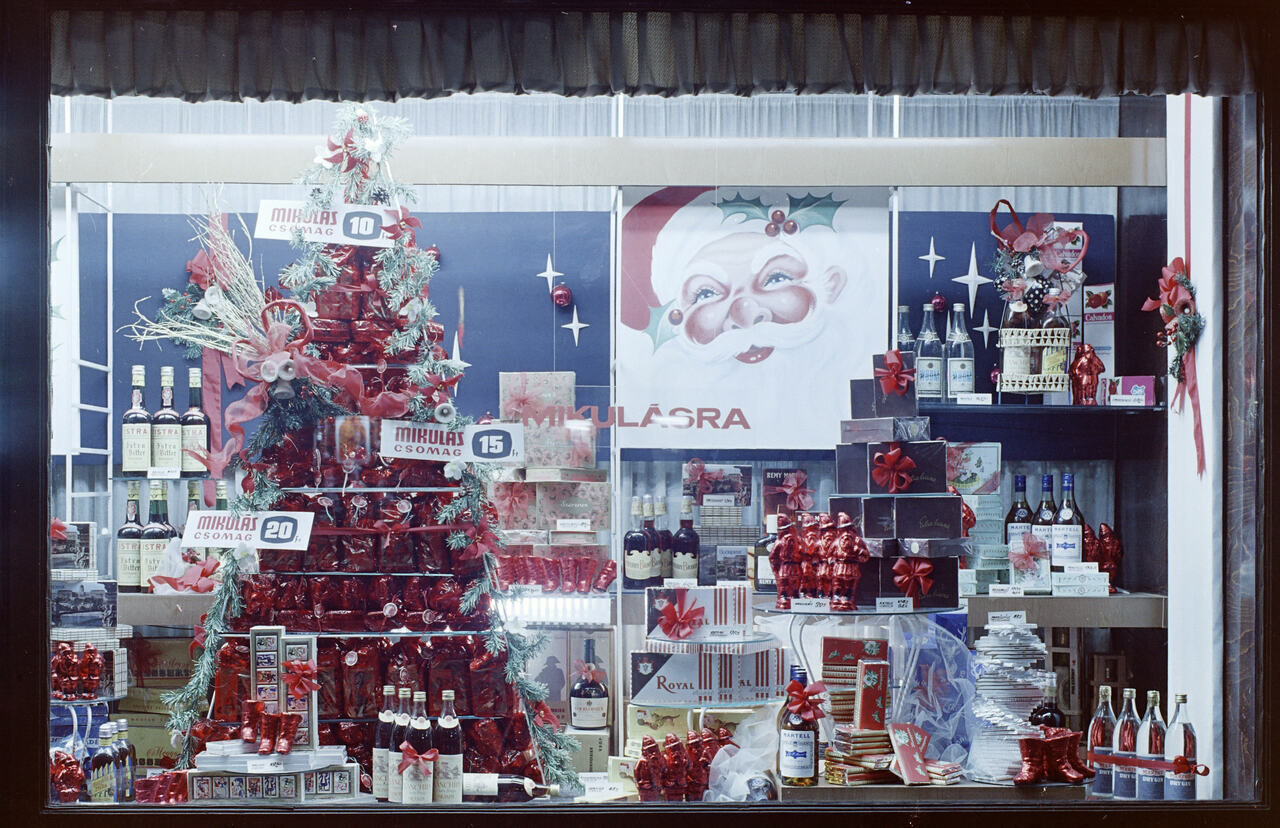Why does Santa arrive so early in Hungary? – History and traditions

In the English culture, especially nowadays, the image of Santa Claus is a fat jolly and old, but kind white-haired man in red clothes and a long beard. In most English-speaking countries and many other parts of the world where Christmas is celebrated, it is believed that Santa Claus delivers presents to people – especially children – on Christmas Eve. However, Hungarians celebrate Santa Claus a little different.
In Hungary, as in many European countries as well, Jézuska (Christkind) is the traditional gift-giver during Christmas and in Hungary it is usually celebrated on Christmas Eve, rather than in Christmas morning.
Santa Claus in Hungary is called Mikulás and is celebrated on the 6th of December. In many countries that follow stricter Christian traditions, just like in Hungary, the figure of the Santa Claus is based on Saint Nicholas.
While the transformation of the saint to Santa is quite interesting, in Hungarian tradition, the celebration of Mikulás is probably somewhat closer to the original Christian tradition mixed with Hungarian customs and folklore.
History
According to National Geographic, Saint Nicholas was a Greek man born in the late 3rd century. During his life, Nicholas became a bishop – this is probably where the imagery of the Hungarian Mikulás’s crook and mitre come from – of Myra, which is located in modern day Turkey. He became known as a defender of the Church.
He was a popular saint of many peoples but have evolved to be the patron saint of children for which he is mostly known now in Hungary. The story of gift-giving is connected to him because of the story of a poor father.
According to the legend, St. Nicholas, or Szent Miklós as he is called in Hungarian, saved three little girls from having to be sold to a brothel as prostitutes.
The father of the three girls had no money and he could not pay any dowry for her daughters. Since they could not marry, they were fated to be maidens and would need to be sold to the brothel. However, Miklós pitied the girls and secretly hid money (or gold) in their boots to pay for their dowry, Szeretlekmagyarország writes.
Tradition
The Mikulás tradition has evolved quite a lot over the years and it is one of the youngest Hungarian traditions. In Hungary, children will leave their cleaned boots on the windowsills so that Mikulás could hide sweets and small presents in them for the children. This comes from the last part of the legend, where Mikulás hid the money in the girls’ boots.
However, kids are also kind of “punished” if Mikulás deemed them to have been bad children. In Hungary, instead of receiving coal (although some families in Hungary also do that), children usually get a virgácsfrom Mikulás’s helper, the Krampusz.
How the Krampusz evolved to become the helper of Mikulás is interesting. It was a pagan character who got mixed into Christian traditions in Europe. In a few depictions, he whips lazy people with a sheaf of branches, which is now called the virgács. There was a time in Hungary around the 18th century when celebrating Mikulás and Krampusz was banned as the latter scared children so much.
Since then, in tradition, the helper of Mikulás evolved to be less frightening and is often accompanying Mikulás even to events for children. Nonetheless, people like horror and the tradition of the scary Krampusz is revived in dedicated festivals around the world.
Celebration
Nowadays Mikulás is often celebrated in kindergartens where people would dress up as the gift-giver and Krampusz and would give children small packages of gifts with tangerines, peanuts and szaloncukor. Children would be taught to sing jolly songs to Mikulás to receive the gifts.
You can also pay someone to come to your house dressed up as Mikulás and give the children their gifts. A few years back it was often done by university students to get a little extra pocket money.
Children are also encouraged to clean their boots to put on their windowsills so that the Mikulás could hide the presents there.
Source: nationalgeographic.com, szeretlekmagyarország.hu, Daily News Hungary










Let us not forget that the original festival was the Ancient Roman festival of Saturnalia, marking the winter solstice and held for hundreds of years before Christ was born. The Christians decided to hold their festival one the same dates purely for practical reasons (nothing to do with when Christ was actually born), starting this in the 4th century AD as a sort of ‘rival’ to the established non-christian festival. This was under the reign of the Roman Emperor Constantine, the first Christian Emperor who was keen to promulgate his faith.
when did humbug come to reign?
@Anonymous: best ask the commentator István that. He excels in ‘humbug’, amongst other things.
Thank you Péter Licskay for a beautiful story about celebration of Christmas and Mikulás in Hungary. I remember some details from my early childhood before the Soviets and “Hungarian” communists got their filthy paws on our Christian holydays. We survived them, thanks to the resiliency of Hungarian culture and faith.
The twisted Soros dogs are unable to live without me. I enjoyed the article but the comments from these were the usual trash.
@István, given your advanced years (you attended the BME 65 years ago you said in another post) we will soon have to learn live without you.
Exactly 65 years.
It has been a grand trip and you are right about getting closer to end. It has been some years since I last presented my work at an engineering scientific conference.
I support an organization that helps the heroes of Hungarian uprising. Every year I get more and more notices of “bajtársak” passing. I will too but our examples and experiences are not getting lost with our passing. The patriotic spirit is alive and well with the younger generation. The communist murderers and traitors are also passing but their children and grandchildren continue their treason. History. Which one are you?
István, my ancestral family home is in Fertőd, a building now used as a tourist and cultural attraction. Work it out for yourself.
The heroes of the uprising stayed and fought. They did not run off to America. István.
This is what happend to those who suffered the brutal retaliation of Kadar and his goons:
“Aftermath of the Hungarian Uprising in Hungary
From the Wikipedia page [1]
In the immediate aftermath, many thousands of Hungarians were arrested. Eventually, 26,000 of these were brought before the Hungarian courts, 22,000 were sentenced and imprisoned, 13,000 interned, and 229 executed. Hundreds were also deported to the Soviet Union, many without evidence. Former Hungarian Foreign Minister Géza Jeszenszky estimated 350 were executed.”
The quoted brief summary doesn’t adequately describe the horrors of what happened to Hungarian patriots in the torture chambers of communist traitors.
Hungarian patriots don’t question the bravery of those who escaped the terrible faith of those who fought against the Soviets and “Hungarian” communists and escaped the torture, murder and destroyed lives of those who stayed behind.
Would Anonymous be this disgusting and shameless criticizing those Jews who escaped the Nazis? I don’t believe so because Anonymous and his ilk do not value Hungarian lives. Anonymous and his ilk hate Hungarians.
Good Memory, you didn’t answer my question. You may or may not have heard of gróf Károlyi Mihály who was a Hungarian aristocrat and yet one of the most shameful characters of Hungarian history. Károlyi was a traitor to Hungary.
I am not saying that you are anything like that. All I am saying that nobility is not 100% guarantee of anything. A simple answer would have been sufficient.